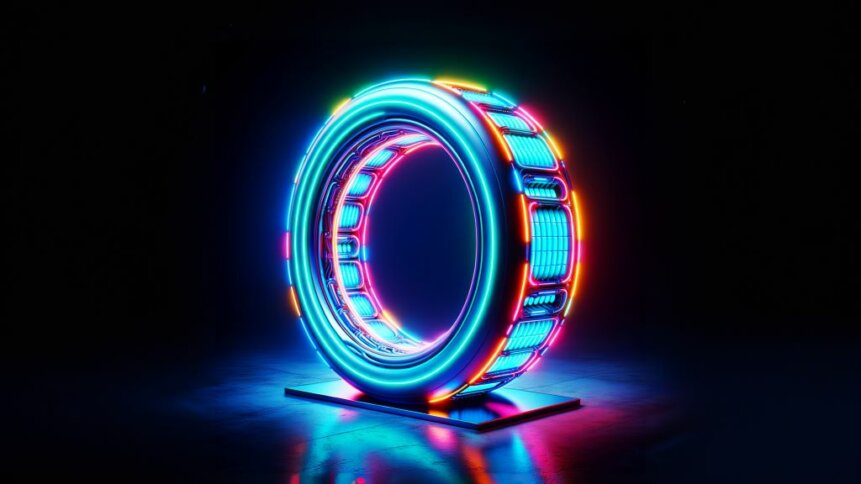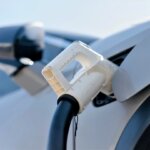Battery circularity – another reason to speed ahead with EVs?

|
Getting your Trinity Audio player ready...
|
Responsible product designers are aware of the need to engineer items that are repairable and straightforward to recycle once devices reach end of life. Even Apple, which has a history of making smartphones that are tricky to take apart, has made concessions with its more recent iPhones (smartphone refurbishers were surprised to find a removable front and back on the iPhone 14 to aid repair). There are a number of factors at play in the circular electronics economy, and one that’s sure to be getting more attention is battery circularity.
Developers are scrambling to secure battery materials. Tesla broke ground on its in-house lithium refinery in May 2023, highlighting how integral battery supply chains are to the success of electric vehicle (EV) makers. What’s more, the race to dominate EV production could be about more than just eliminating tailpipe emissions.
Chinese EV maker BYD recently made headlines by beating Tesla to become the world’s largest producer of battery-powered automobiles. BYD is similarly vertically integrated, having its own battery production division and lithium mine operations. And once those batteries have been produced, they can provide a source of revenue many times over for firms.
In fact, it would not be a surprise to see large EV producers also become significant players in the energy sector. Once batteries have served a useful life in vehicles they can be repurposed into other energy storage applications – adding a further decade of service. For example, Volvo Group – which produces around 300,000 vehicles per year and expects those to be electrically powered in the future – has set up an Energy division to explore these opportunities.
Towards battery circularity
Decarbonizing transportation by replacing fossil fuel powertrains with electric motors is going to require – at first – mining vast amounts of battery materials. But digging lithium and related feedstocks out of the ground won’t continue at scale forever. Economists and technology experts believe that there will come a point when the battery value chain becomes independent of raw materials.
“In all scenarios, China will be the first to realize a circular battery value chain, doing so more than ten years earlier than Europe and the US for lithium and nickel and seven years earlier for cobalt,” write Stephan von Delft and colleagues in a recent study.
Sourcing lithium, nickel, and cobalt from recycled batteries reportedly saves 70% of the emissions compared with mining. And closed-loop recycling methods mean that the water used in the materials reclamation – which includes plastics from the casing, as well as aluminum and copper from the battery internals – doesn’t end up as waste.
Popular types of lithium-ion batteries
Considering the automotive sector, popular types of lithium-ion batteries include so-called LFP and NMC designs. LFP batteries feature lithium iron phosphate (LiFePO4) cathode material. NMC designs, on the other hand, are based on mixed metal oxides of lithium, nickel, manganese, and cobalt.
LFP batteries have the advantage of a much longer cycle life in comparison with other lithium-ion chemistries. And the materials system is said to support several thousand charging/discharging cycles compared with a couple of thousand for NMC cells.
Explore the #eBusMission Measures Catalogue for Improving the Circularity of Batteries Used in E-Buses unlocking innovative strategies & solutions to enhance battery circularity in e-buses 🚍⚡️
👉Download here: https://t.co/cR8cLtwtzg pic.twitter.com/nEqURFUaun— 🚶♀️🚶♂️🚴🚍⚡ (@TUMInitiative) June 14, 2023
Plus, the economics of making LFP batteries are more favorable for producers as their non-lithium feedstocks are more abundant. However, users will notice that EVs with LFP battery packs are either heavier or have less range than vehicles powered by other lithium chemistries, such as Li-NMC, due to energy density constraints.
Battery circularity beyond vehicles
As well as containing thousands of individual energy cells, EVs feature comprehensive battery management systems to keep everything running smoothly and maximize device performance. Data gathered from the battery management system can tell operators when it’s time to swap out the battery and give it a second life – for example, to support vehicle charging infrastructure or help optimize building power supplies and microgrids.
Used and refurbished EV batteries are capable of storing power gathered from solar panels or wind power. And tracking back to how automotive firms are realizing that battery packs can be useful outside as well as inside the vehicle, battery circularity enables those organizations to grow their customer base.
Companies that have traditionally targeted vehicle buyers can widen their appeal and meet the needs of people looking for energy storage more broadly. And the welcome reality that EV batteries can have many lives gives rise to the idea of having a battery passport [PDF], which can help buyers determine the provenance of devices that they are considering purchasing. Other stakeholders benefit from having this information too, such as battery collection firms and recyclers.
Design for remanufacture
Clever battery recycling technology capable of digesting EV power packs whole, avoiding the need for manual disassembly, is impressive and keeps valuable electrode materials in circulation. However, one of the most significant things that battery developers can do is to prioritize the repairability and remanufacturability of their designs.
“Investing in this at an earlier stage can minimise or eliminate issues further down the line, while helping to achieve circularity goals, as batteries remain in use for longer to maximise the potential environmental benefits on offer,” comments Autocraft – an OEM partner with expertise in EV battery manufacturing and remanufacturing – on its website.
Key to the success of battery circularity will be investment in remanufacturing and recycling infrastructure worldwide, extending the useful life of Li-ion products globally, and enabling the widespread recovery of secondary materials.









